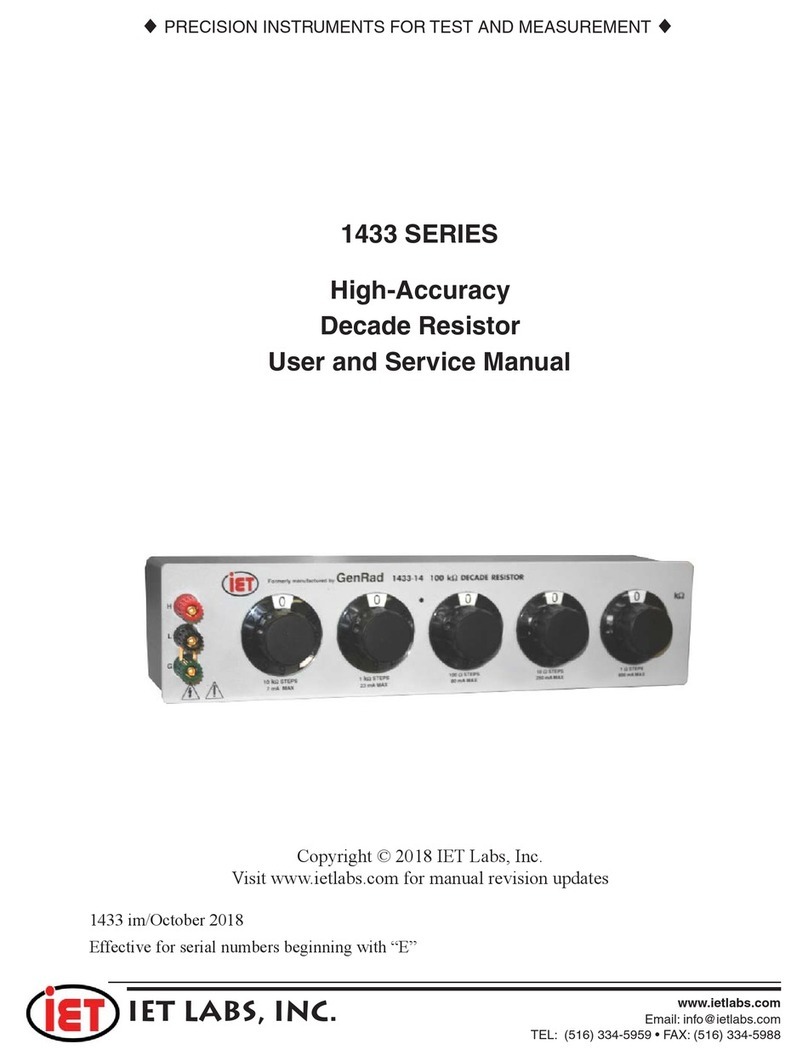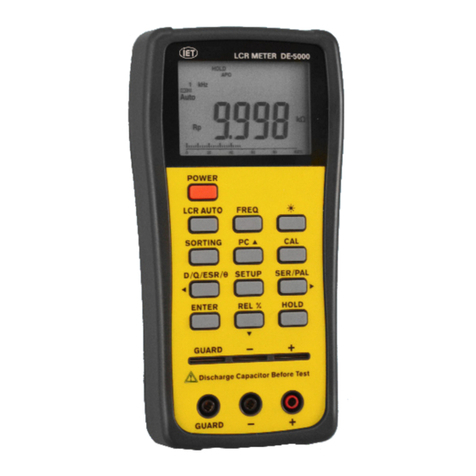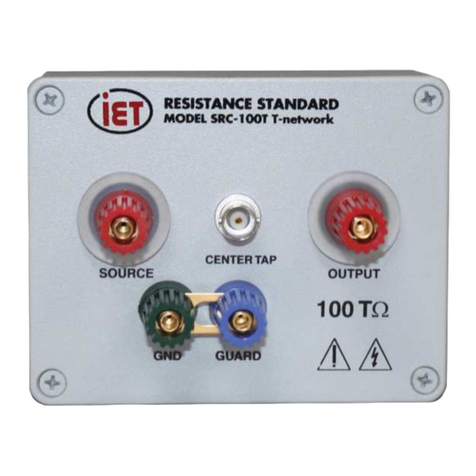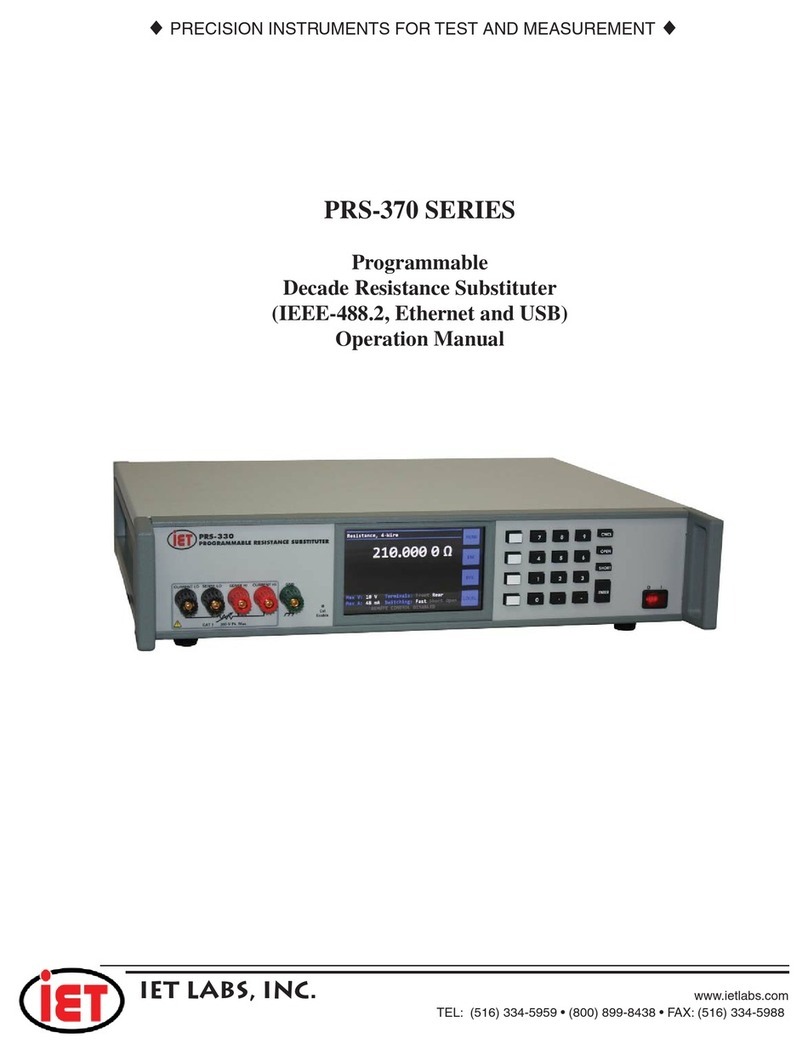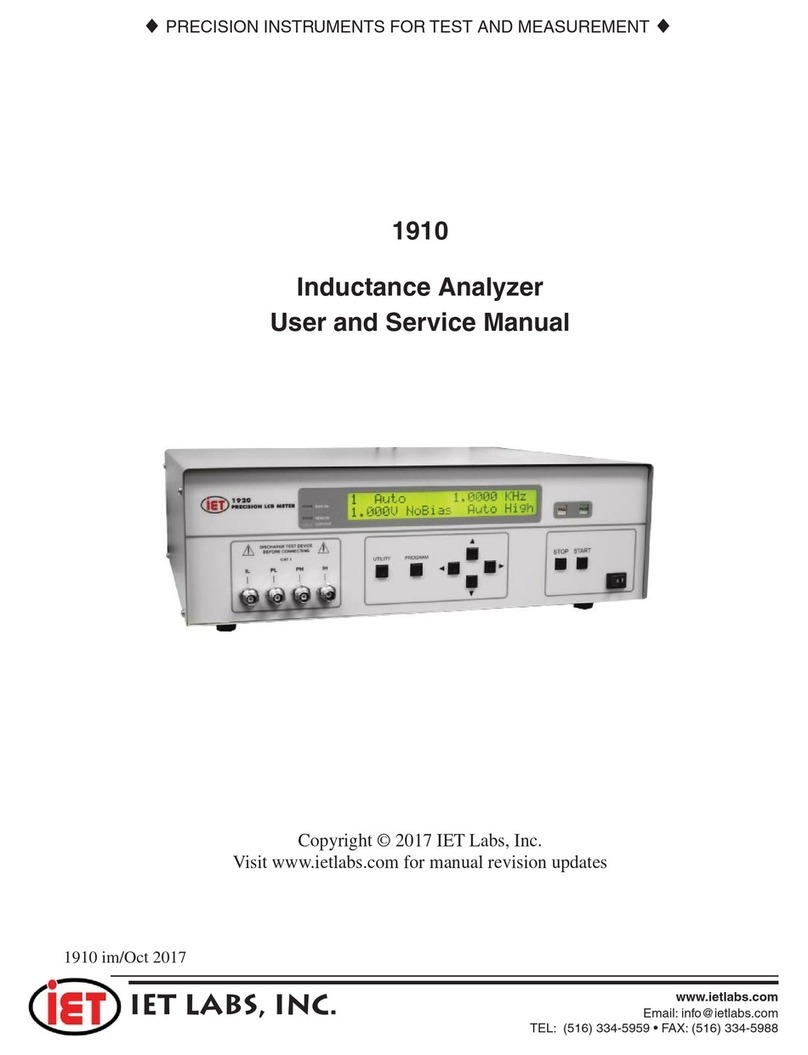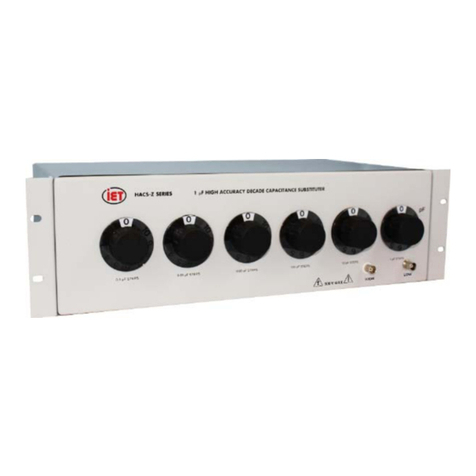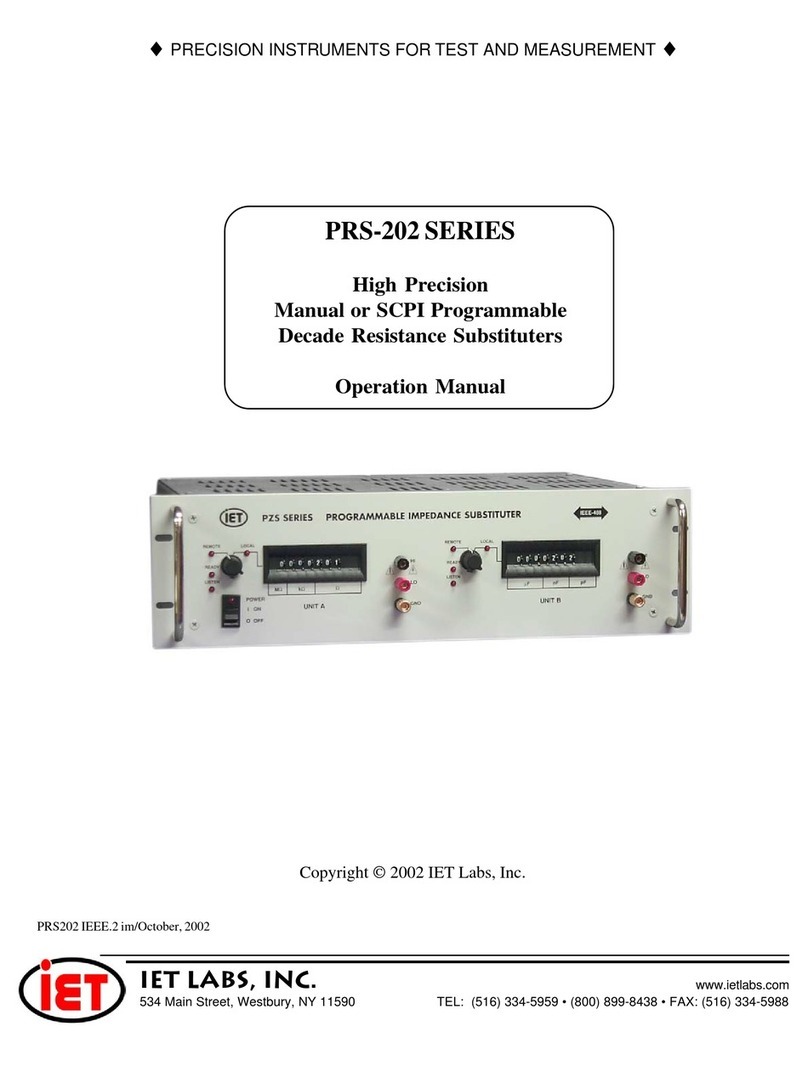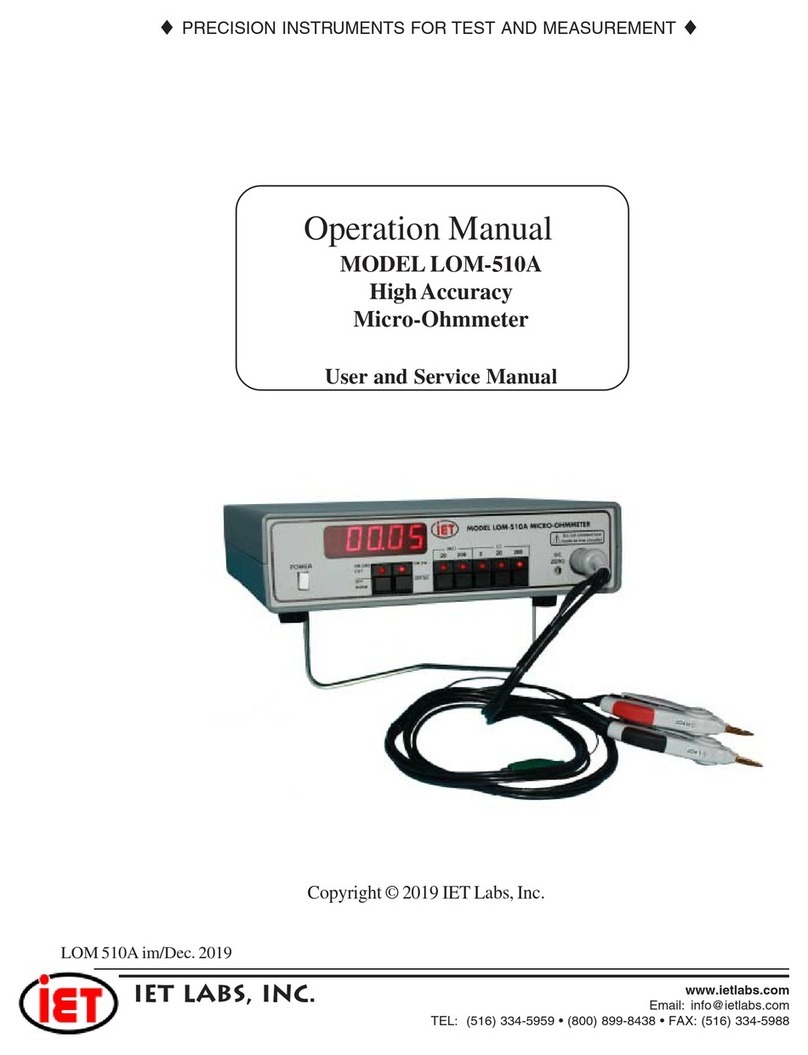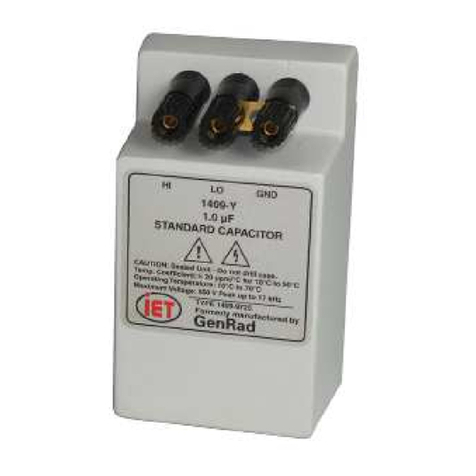
For convenience to the user, the pertinent
specifi cations are given in an OPERATING
GUIDE, shown typically in Figure 2.1, affi xed
to the case of the instrument.
2.1 Specifi cations
Sound level range: 35 to 130 dB re 20 µN/m2
Sound level accuracy: ±1.5 dB
Frequency range: 31.5 Hz to 8 kHz
Weighting: A and C
Output: 3.5 mm mini-jack
ac Output: >0.65 Vrms behind 600 Ω at full
scale; will drive oscilloscope or low-imped-
ance headphones
dc Output: 10 mV/dB
Display: 3-1/2 digit LCD display, full scale
sound-level range set by Range select switch,
greater than 10 dB portion of scale for sound-
level comparisons on 2 ranges, and low end of
sound-level range set by range select switch.
Power: One 9V (6F22 or equivenent) alkaline
battery supplied, provides 50+ hours of opera-
tion
Environmental:
Temperature: 0 to 50°C operating
-40 to +60°C storage, with batteries removed
Humidity: <95% RH non-condensing
Weight: 0.21 kg (7 oz) net, 1.4 kg (3 lb) ship-
ping
Dimensions: 24 cm H x 6.8 cm W x 2.5 cm D
(9.45” x 2” x 1”)
Accessories supplied: Instruction manual,
windscreen, adjustment screwdriver and carry-
ing case
Additional Specifi cations
Standard: Conforms to ANSI S1.4-1983 Type
2 and IEC61672-1:2013 Class 2
Dynamic range: 55 dB with 2 ranges Lo and
Hi
Ranges: Lo: 35 - 90 dB and Hi: 75 - 130 dB
Time weighting: rms response with fast 125
mS and slow 1 s
Microphone: 1/2” electret condenser micro-
phone
Resolution: 0.1 dB
Calibration: Internal oscillator at 1 kHz and
94 dB
Recommended calibration interval: 12
months

